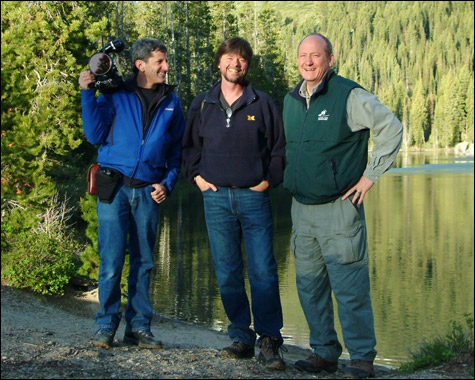
PANTHEISTIC CONNECTION: Long before environmentalism, John Muir extolled the virtue of spaces where “nature may heal and give strength to body and soul.” |
At its core, Ken Burns's PBS 12-hour epic The National Parks: America's Best Idea (nightly on WGBH Channel 2 at 8 pm, from September 27 through October 2) is a selective, initiative by initiative, advocate by advocate, chronicle of the evolution of the National Parks system and the changing roles protected lands have played in American culture since Congress validated Yosemite in 1864. Written by Dayton Duncan, the film does the job of telling that story well, despite focusing on only a double handful of sites (though all are depicted) and "a few" (that is, "just" 60 or so) of the players in the struggle to establish protected public lands.Beautiful? Of course, it's beautiful. Burns, after all, filmed the same dramatic landscapes gorgeous enough to inspire a profit-obsessed, expansionist-minded nation to preserve natural settings for future generations. As he reminds us, the initial motivation behind such set-asides was more spiritual than scientific. Logical arguments for protecting wilderness based on the environmentalists' long view and calculated ecological management came late to this party. In the 19th century, the sales pitch was based on æsthetics and a plea to restore the pantheistic connection between modern, industrializing society and Eden.
Naturalist John Muir, the parks movement's primary early advocate, certainly had a head for science, but he buttressed his case with transcendental arguments like "Everybody needs beauty as well as bread, places to play in and pray in, where nature may heal and give strength to body and soul." Muir understood that what moves the spirit is not only the impressive foreign spectacle of a primordial vista but the humbling fact that such a souvenir from unimaginable æons past can exist in the present.
As usual, Burns inserts interviews by writers and participants that, occasional repetitions aside, place the history in meaningful perspective. Prime among these is his unintended "star," African-American ranger Shelton Johnson, who's brought into the mix only to comment on the period when black cavalry, the "Buffalo Soldiers," patrolled the parks. Johnson, it turns out, is also a poet and the production's most eloquent, silver-tongued recurring spokesperson. Burns calls him "the conscience of the film."
Speaking of which . . . good news: under-represented groups — African-Americans and Native Americans, women — are represented. Better news: they're included without exaggeration, so their presence don't distract from the larger themes.
One of the more valuable of those larger themes is, in fact, treated almost as subtext. Even as commercial and local interests opposed the idealists' bids to exclude land from development, the parks movement found support among railroads and robber barons. The transcontinental rail lines were out to encourage tourism, and in their early days they did more to popularize and promote the parks than any government agency or naturalist visionary. Later, wealthy families — notably the Rockefellers — used fortunes they'd amassed despoiling other landscapes to buy up large tracts for preservation.
In the summer of 1991, the year after Burns's The Civil War first aired, domestic battlefields were overwhelmed with visitors. The National Parks will undoubtedly have the same impact on Yellowstone, Acadia, Zion, and America's other 55 national parks and 333 national monuments.
From a filmmaker's perspective, Burns's production is a herculean effort of documentation. But viewers are more likely to welcome it as a lengthy seductive love letter to America's too-long distorted ideals.
Clif Garboden can be reached atcgarboden@gmail.com.